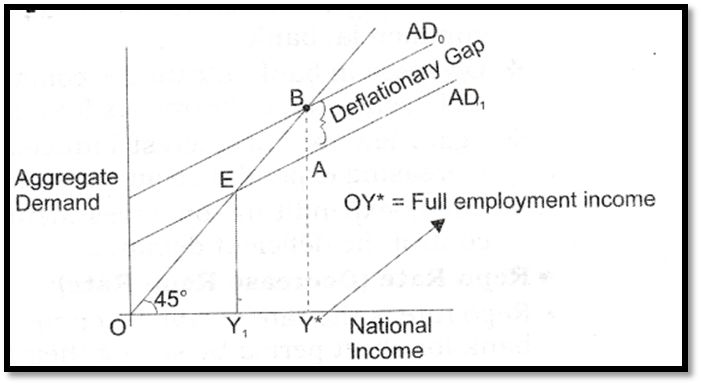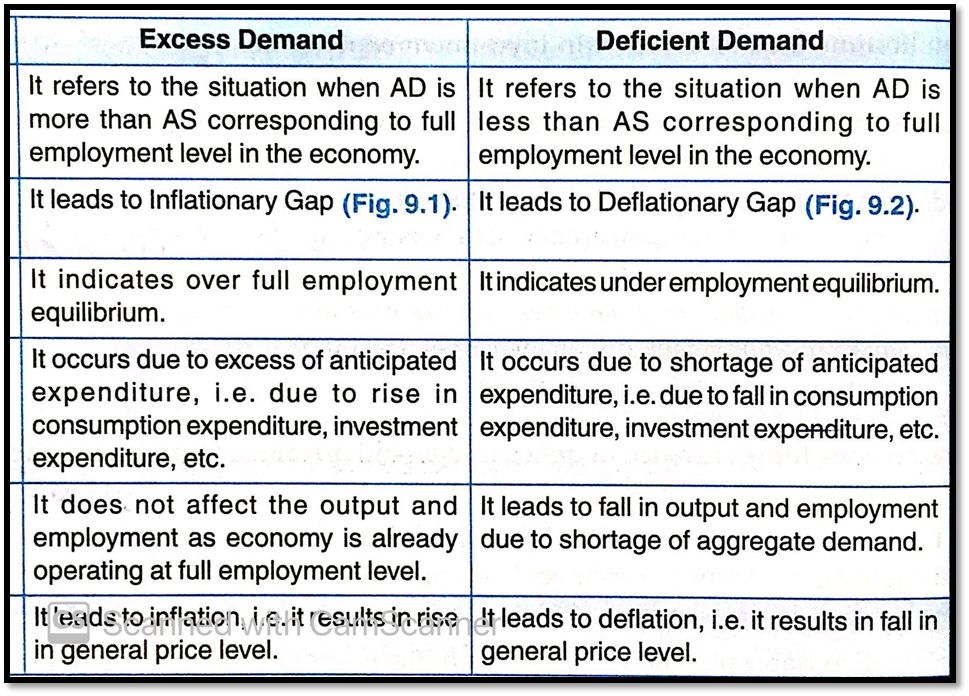Deficient Demand:
Definition: When in an economy, aggregate demand falls short of aggregate supply at full employment level, the demand is said to be a deficient demand.

- Deflationary gap is the gap showing Demand deficient of current aggregate demand over ‘aggregate supply at the level of full employment’. It is called deflationary because it leads to deflation (continuous fall in prices).
- Let us suppose that an imaginary economy by employing all its available resources can produce 10,000 quintals of rice. If aggregate demand of rice is, say 8,000 quintals, this demand will be called a deficient demand and the gap of 2000 quintals will be called as deflationary gap. Clearly here, equilibrium between AD and AS is at a point less than level of full employment. Keynes called it an under employment equilibrium.
Reasons for Deficient Demand:
- Decrease in household consumption demand due to fall in propensity to consume.
- Decrease in private investment demand because of fall in credit facilities.
- Decrease in public (government) expenditure.
- Decrease in export demand.
- Decrease in money supply or decrease in disposable income.
Impacts or effects of deficient demand:
- Effect on General Price Level: Deficient demand causes the general price level to fall because it arises when aggregate demand is less than aggregate supply at full employment level. There is deflation in an economy showing deflationary gap.
- Effect on Employment: Due to deficient demand, investment level is reduced, which causes involuntary unemployment in the economy due to fall in the planned output.
- Effect on Output: Low level of investment and employment implies low level of output.
DIFFERENCE BETWEEN EXCESS DEMAND & DEFICIENT DEMAND:


 PathSet Publications
PathSet Publications
